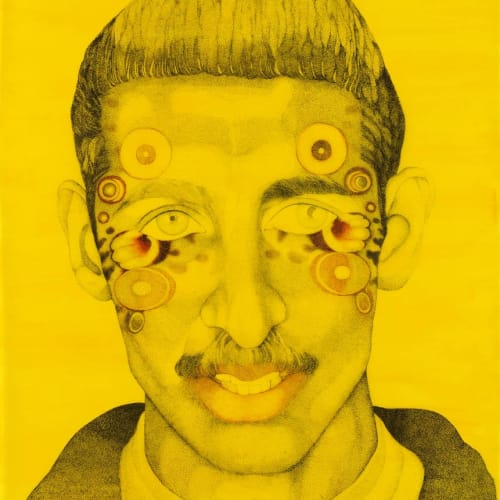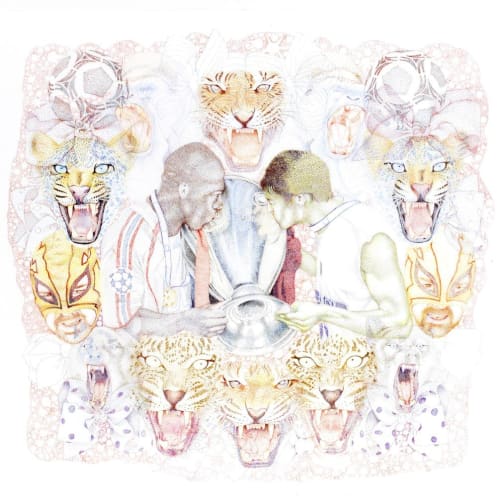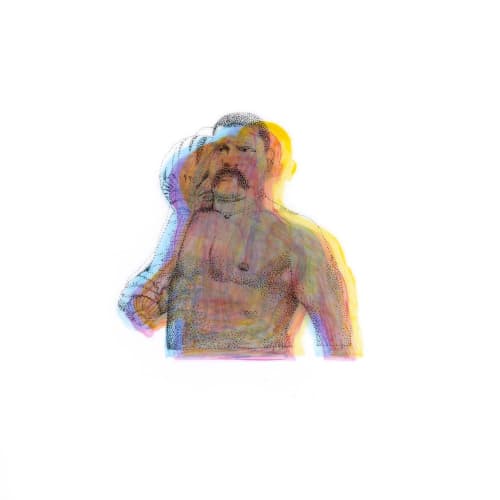Faiza Butt: PEHLWAN
Grosvenor Vadehra is pleased to announce an exhibition by the Pakistani artist Faiza Butt.
The word Pehlwan (Farsi for wrestler), is a term used to describe a man of impressive physical worth and attributes. 'Pehlwans' have had significant standing Islamic traditions - from the spiritually charged Iranian 'zur-khanas' to the shrine dwelling Indo-Pak monks - they command the respect of the classically divine hero.
In the current exhibition, the artist continues her exploration of gender issues. She focuses on the representation of the male image in modern photography. Butt turns the gaze of her audience to the highly eroticized images of men - with bare and ribbed chests such as those of wrestlers -demonstrating hyper-masculinity. In doing so, the artist seems to be reacting to the portrayal of women as 'objects of desire' in art history.
The elaborate drawings are created from found and scavenged journalistic photos. From images of Iranian wrestlers to trophy kissing western champions, the portrayal of the sporting 'Warrior hero' is under put under scrutiny, sometimes with wit and at other times more frankly. Many of the images are mug shots of Muslim men found in various newspapers and magazines, reinforcing the stereotype of the Muslim man as a terrorist. Yet, Butt's instinct is to decorate these images and beautify them, making them a source of enjoyment and gratification. The subliminal power of the cropped journalistic image is assessed and exaggerated by the artist, as these portraits are enlarged to a dominating scale with the slightly 'off' stare holding the viewer in his place. Once again these images of men are represented with a fantastical narrative, objectifying them into a spectacle.
Although a trained Slade artist and living in London Butt's Pakistani roots are clearly evident in her work as she brings to our attention various social, gender and political issues faced by a young Pakistani. In the past, her work has taken a critical look on the stronghold of the patriarchal society in Pakistan and the impact of violent images, which appear frequently in all forms of media, on children.
Butt's paintings are laboriously crafted using a near obsessive technique of tiny dots - this style is reminiscent of the par dokht style in miniature painting - a rigorous process that involves the covering of the painted surface with individual dots. One can trace origins of this style in Butt's work from the training she received in miniature painting at the NCA in Lahore. However these dots also replicate pixels structure of a photograph, on polyester translucent films. This is especially relevant given that the artist created these drawings from photographs in newspapers and magazines. The pieces are mounted on light boxes, activating the process of development and creating an ethereal iconic appeal.
Although she is aware of the Post Impressionists and the Pointillists, her work comes from an entirely different origin, and whilst the Pointillists wanted to capture the effect of light Butt is interested in capturing the beauty and contradictions of the Islamic tradition.
Born in 1973 Faiza Butt trained at the NCA in Lahore and the Slade School of Art in London. Her work has been shown in various museums and included in several publications. Recently, her work was part of Hanging Fire: Contemporary Art from Pakistan, an exhibition of works by Pakistani artists held at the Asia Society in New York in 2009. Butt's work was included on the cover of the catalogue accompanying the exhibition.
H.M. Naqvi, author of The Home Boy will be contributing to the catalogue for the current show. There will be a conversation between the artist and the author on the 15th of October 2010 followed by the release of the book The Home Boy on the same day.




